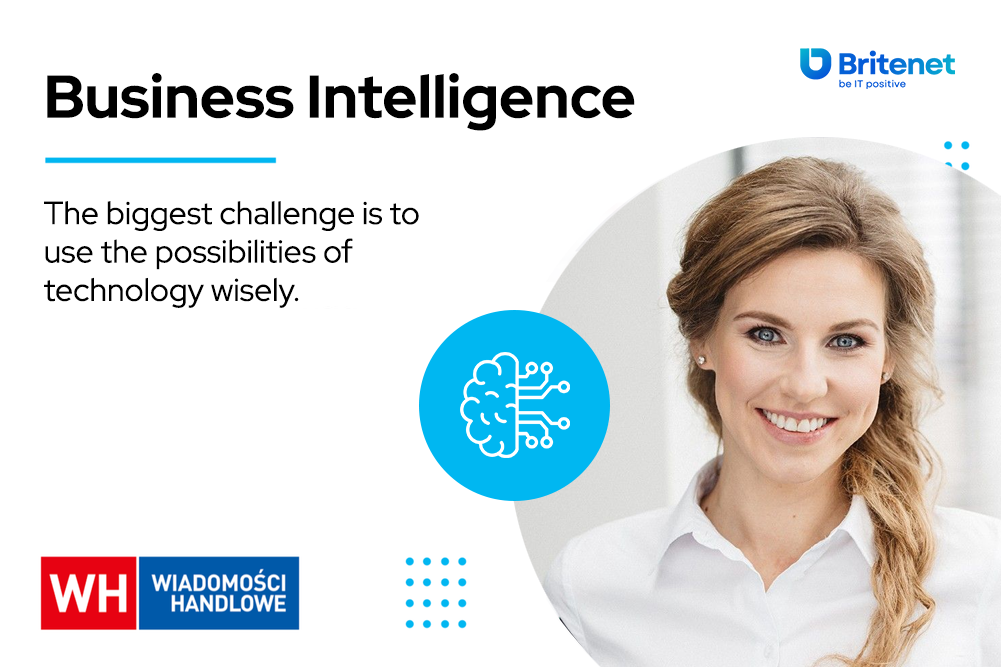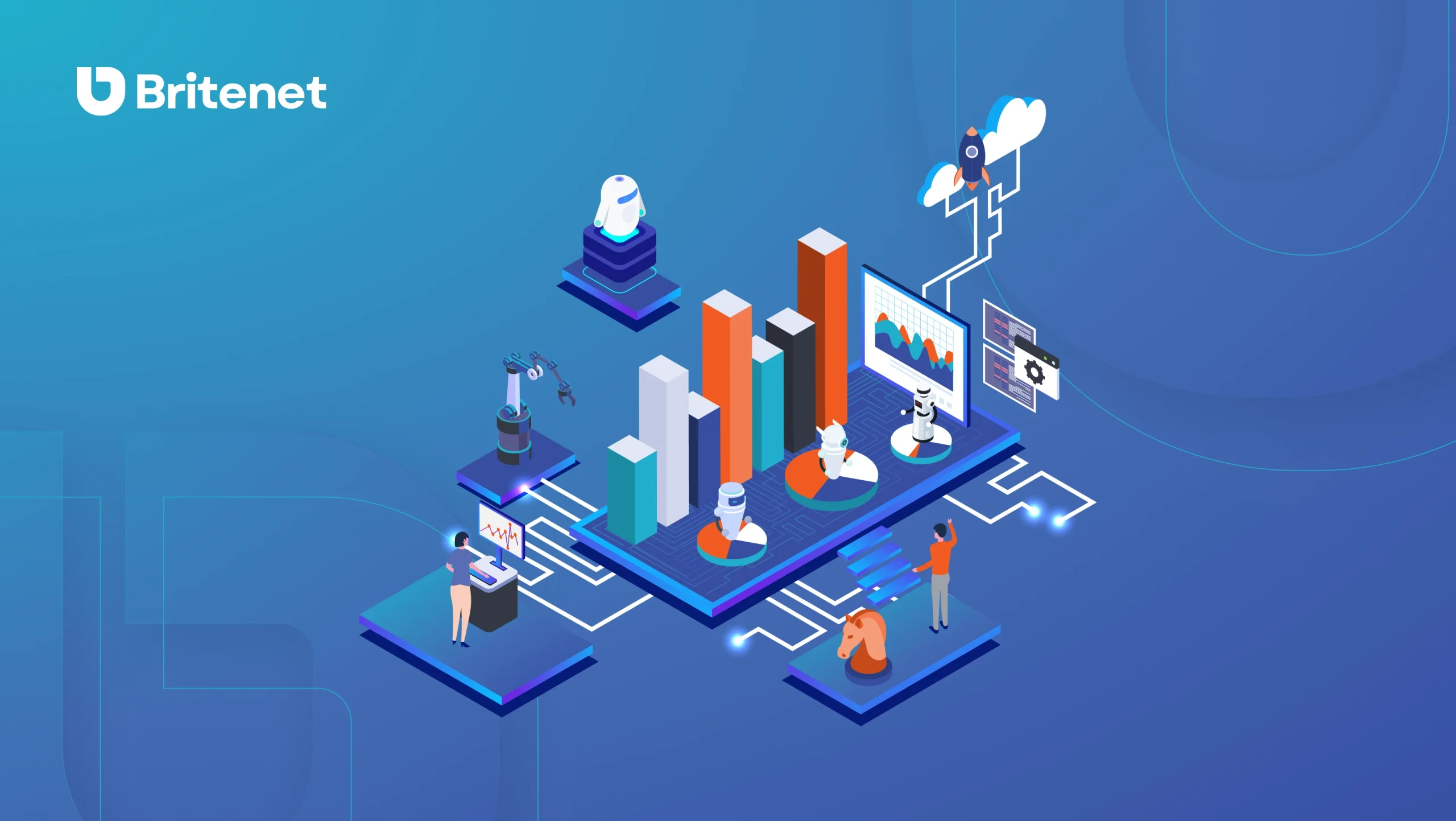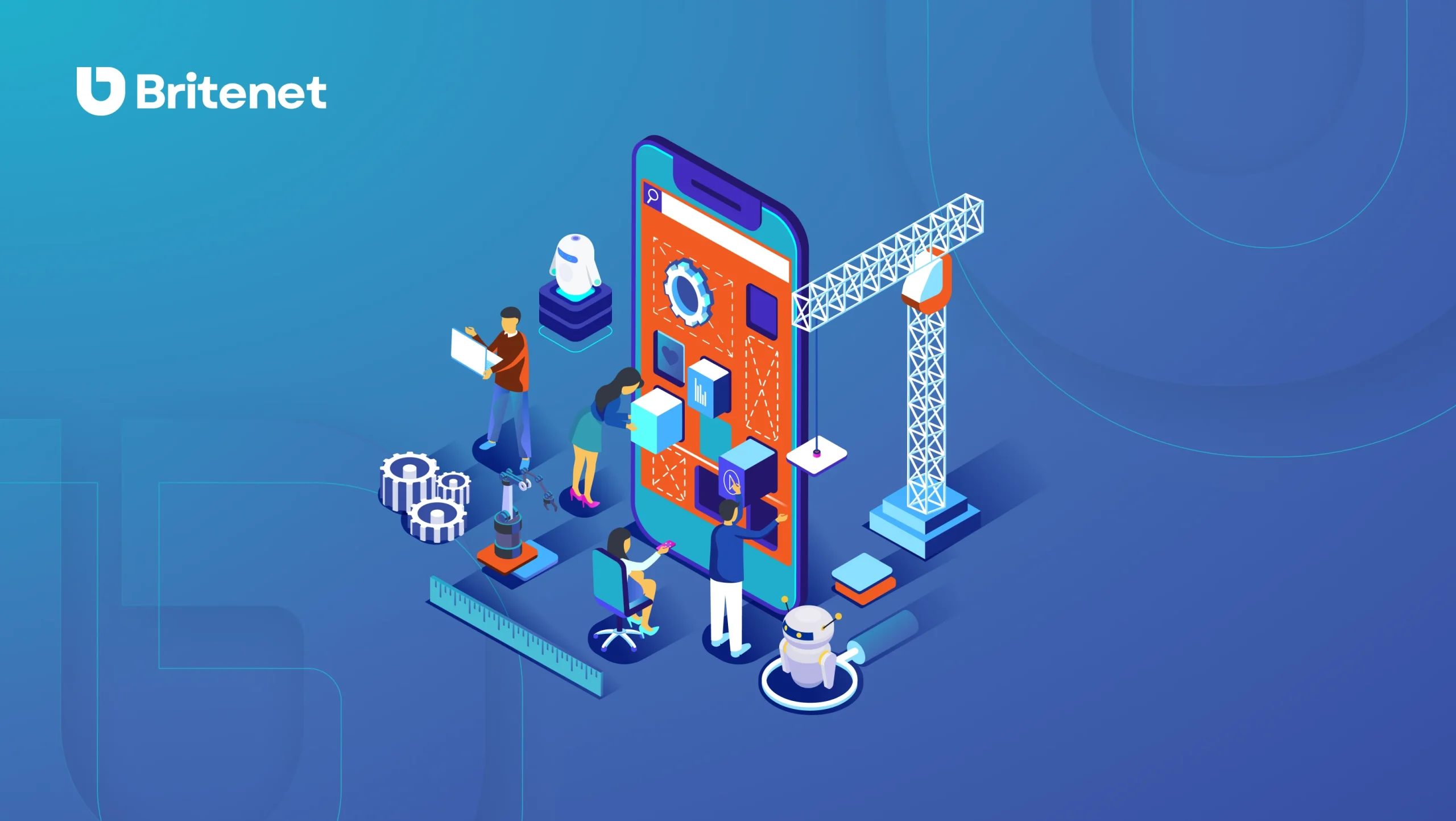Magdalena Jagiello - Director of International, Retail & Logistics Services at Britenet - in an interview with Michal Kokoszkiewicz of the Retail News portal, talks about IT in commerce, new technologies and the role of data in the retail industry, among other things.
What are the most important technological challenges facing the retail sector today?
The challenges facing the retail sector are no different from the problems encountered in other industries. It is clear that it is difficult to imagine operating today without the support of technology. The associated challenges involve important decisions that are key to further development.
The first of these challenges is to choose between implementing IT projects internally (in-house), using a hybrid model (combining an in-house team with an external provider), or opting for comprehensive external support, allowing the company to focus on its core business and trust the technology partner. Whatever the decision, the key is to align it with the company's operating concept, organizational capabilities and business profile.
Once this strategic choice is made, the need arises to make other equally important decisions, and certainly not easy ones. Nowadays, one cannot complain about a lack of technological options. A variety of technologies, numerous software languages and a range of off-the-shelf solutions are available. The biggest challenge for companies, however, is to use this diversity wisely. It is necessary to conduct an analysis to identify which solutions best meet specific business needs. In doing so, it is worth remembering that technology and its challenges are tools for implementing business values, not ends in themselves. The question of whether to opt for Java, .Net or another option is just one of many facing the retail sector. It is important to avoid the trap of choosing based solely on current popularity. It is equally important to consider the forward-looking capabilities, the ease of developing and maintaining a given technology in the future.
The biggest technology challenge for companies is not only the decision to implement IT projects, but also to use the available capabilities wisely. It is essential to understand what best suits a company's individual needs and goals, and to make choices based on prospects and long-term benefits.
How do retail chains accomplish these tasks? Do they do it on their own, or do they use outside help or partnerships?
Approach models vary and depend on the available capabilities of a particular commercial network. Choosing a consistent approach, i.e., deciding to do things yourself because others are doing it, can lead to mistakes and a quick deviation from this model, which always carries a cost. It cannot be said that there is one established, proven model in this context. The choice should be tailored to the specifics of the network, the organization and the retail industry to which the company belongs.
Which technologies are or will be key to trade in the coming years?
On the one hand, we can say that mobile technologies are crucial in the retail sector, because there is no more direct contact with the customer than through mobile apps in his pocket. On the other hand, Big Data technologies are also important, because nowadays everyone wants to be Data Driven. This trend will grow because of the amount of data in organizations - missing this opportunity would be a mistake. Both of these observations are valid, but it is important to remember that technology is only a tool. In the rush for technology, it's easy to lose sight of the goal and forget the business value, and that value is crucial.
Whether we use a mathematical algorithm in R or Python is of little importance - it's a secondary issue. What matters is that the user gets the value he or she cares about, i.e. increased productivity, improved efficiency of a given process, optimized process, forecasting and better supply chain management. This is a tangible, measurable, benefit, and it won't matter much in this case whether we use the cloud or the latest programming language such as Go (Golang).
If we wanted to discuss in detail the steps to a successful IT project implementation, we would start with the key points that need to be accomplished. What are the first steps and what happens next?
To achieve business value through an IT project, a key aspect is the selection of a partner. Whether it is an external partner, an internal partner, or we have taken on a different model of cooperation, it is important that this partner understands our business needs and is willing to support us in the process with his knowledge, experience and skills. It is worthwhile both to draw from the past, experience and lessons from previous projects and organizations, and to be open to new initiatives and inspiration.
Having a partner is one thing, but an organization's self-awareness is equally important. Before, during or after selecting a partner, a company should consider where it is in terms of IT. IT projects have a sequence, and missing certain steps can prevent the effective implementation of advanced technologies. For example, effective Business Intelligence analysis requires robust data, just as implementing Data Science models requires a well-crafted data model.
Awareness of an organization's own position is often the catalyst for taking necessary steps. Audits and analysis, backed by recommendations for direction, are helpful in understanding where the company is, as well as in determining which direction is worth pursuing, taking into account current trends and competition. In this way, the organization can effectively adapt to market requirements and implement IT projects with full awareness of its place and goals.
I understand that Britenet not only offers this kind of service, but also actively communicates with its partners, giving advice on what to skip, and pointing out which way is best to go?
As a provider that strives to bring the benefits of expertise, programming skills and experience gained from previous projects, we are able to support the client at various stages. Starting our cooperation from the audit stage enables us to get an effective idea of where the organization stands in terms of IT. On the one hand, it enables us to understand the client's current condition. On the other hand, the client gains insight into our competence and the way we operate. In my opinion, this is beneficial for both parties. We are available at every stage of cooperation with the client and are happy to help.
What is the role of data in modern commerce? In your opinion, are they being used to the right extent?
Data plays a key role in the modern world, especially in the context of trade. They are invaluable, enabling reliable, objective, decisions based not on intuition, but on actual numbers. Moreover, thanks to data, we can implement advanced technological solutions, such as Machine Learning, Data Science or Artificial Intelligence - all based primarily on data.
In commerce, we have a huge amount of data on customers, products, suppliers, partners, competitors, as well as logistical and environmental aspects. It is worth noting that even industry leaders are not yet fully satisfied with the use of the available data. The question of how to make optimal use of them would require precision in defining what "optimal use of data today" means. It seems that the appetite for using data is huge, and the ideas for using it are constantly growing. We are at the beginning of the road when it comes to maximizing the use of available data.
It is worth looking at the non-commercial aspect of data use, as in Japan, for example. There, data about people is widely used not only for sales and marketing purposes, but also for social and societal purposes. Artificial intelligence in Japan helps pair young people into relationships, taking into account criteria such as background, income, appearance or life priorities. While the ethical and legal aspects of this application are debatable, it is worth noting that it is supported by the Japanese government.
Although Japan is an extreme case, there are many areas in Europe, as well as in Poland, that could be even better utilized in terms of data. Improving these areas is ahead of us, and the potential for using data in commerce and society seems enormous.
What are other methods of obtaining customer data? Which ones may become more important?
Today, there are an increasing number of data sources that provide companies with information about customers in various sectors. People are increasingly willing, whether consciously or unconsciously, to share their data. Social media, mobile apps, payment cards and loyalty programs make it possible to track various aspects related to the customer. Juxtaposing data from these various sources allows for the creation of an interesting picture of the customer, which in turn can be used to carry out various activities, such as customized marketing campaigns or personalization of offers.
The resulting capabilities are extremely expansive, encompassing advanced forms of marketing where offers, advertisements or products are delivered to the customer at the point where he or she makes a purchasing decision. This all works in an almost subliminal way, making the customer experience more personalized. In the future, we can expect to see even more technologies delivering customer data to the right companies. There are already many solutions available, and this trend is likely to intensify.
Where is this data most readily used by the retail industry? Is it mainly in the marketing area, or in some other areas?
Marketing and sales are two key areas where data is readily and effectively used, bringing tangible benefits to businesses. The use of data in logistics and warehousing areas is also becoming more common. Examples of such applications include optimizing the distribution of products in warehouses, avoiding the transportation of empties in trucks, or planning optimal transportation routes.
Another important area where data is beginning to play a key role is environmental issues. Trading platforms, using it, can suggest to customers which supplier to purchase a product from in such a way as to minimize environmental impact. An example is choosing the shortest and most environmentally friendly delivery route. Algorithms provide customers with information, enabling them to make informed choices for the benefit of the environment.
In addition, data is increasingly being used to address energy supply constraints. Optimization, forecasting and other applications of data related to the energy crisis are gaining importance. While sales and marketing remain key areas, the role of data is growing in other areas as well.
Won't the current crisis inhibit certain technological implementations in commerce, where retail chains are trying to manage every expense very carefully? On the contrary, could it accelerate the implementation of new technologies, enabling chains to better reach customers and optimize processes?
The current economic situation we are experiencing is a new phenomenon for many of us, as not everyone has experience from previous centuries. This phenomenon is different from previous situations due to the tremendous dynamics of change, instability and new challenges. We are dealing with many problems arising from the current situation, such as new restrictions, regulations and other market factors that require a quick response.
On the other hand, there are a number of challenges associated with today's consumers, who are unpredictable and make purchasing decisions based on often anecdotal information, rumors and media hype. In addition, there are issues related to inflation, the hit to e-commerce and the declining value of the consumer's shopping cart, which pose challenges for retail chains.
Disruptions have also been observed in supply chains that have not yet returned to normal, hindering the continuity of the delivery of goods. There are issues related to energy supply, where disruptions can disrupt unprepared businesses, which can result in serious consequences.
Generation "Z", which is now heavily in the market, is making high demands on digital services, making it necessary for businesses to adapt to new consumer expectations.
As such, technology is one of the key elements in dealing with today's challenges, but it alone cannot handle all aspects of the situation. Companies need to take into account cooperation, trust and partnership between suppliers and service recipients in order to effectively face the challenges while implementing inspiring and innovative IT projects. It's also worth noting that not every company is ready to fully implement modern IT solutions, which poses further challenges in difficult budgetary times.



